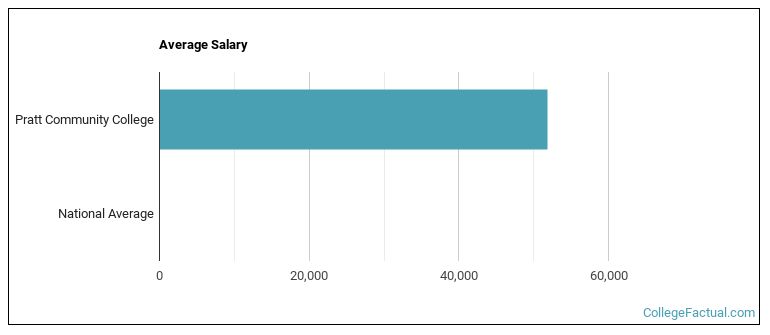 by our College Data Analytics Team
by our College Data Analytics TeamExplore the best ranked schools for the programs you are most interested in.
Pratt Community College landed the #1,876 spot in College Factual's 2025 ranking of best overall colleges in the United States. The higher ed experts analyzed 2,152 colleges and universities across the nation to determine this ranking.
Pratt Community College is also ranked #32 out of 44 schools in Kansas.
Pratt Community College has an open admissions policy, so you should not have much trouble being accepted by the school. Still, it is important to fill out the application completely and submit any requested materials, which may include proof that you have a high school diploma or the equivalent.
The student to faculty ratio is often used as a measure to gauge how much access students will have to their professors - the lower the number, the better. At Pratt Community College, this rate is 22 to 1, which is high when compared to the national average of 15 to 1.
Another measure that is often used to estimate how much access students will have to their professors is how many faculty members are full-time. The idea here is that part-time faculty tend to spend less time on campus, so they may not be as available to students as full-timers.
The full-time faculty percentage at Pratt Community College is 97%. This is higher than the national average of 47%.
The freshmen retention rate tells us what percentage of first-year, full-time students choose to continue on to their sophomore year at a particular school. The rate at Pratt Community College is 67%, which is about average when compared to the national rate of 68%.
During the 2017-2018 academic year, there were 1,164 undergraduates at Pratt Community College with 558 being full-time and 606 being part-time.
| $0-30 K | $30K-48K | $48-75 | $75-110K | $110K + |
|---|---|---|---|---|
| $4,089 | $5,306 | $8,688 | $9,475 | $11,889 |
The net price is calculated by adding tuition, room, board and other costs and subtracting financial aid.Note that the net price is typically less than the published for a school. For more information on the sticker price of Pratt Community College, see our tuition and fees and room and board pages.
It's not uncommon for college students to take out loans to pay for school. In fact, almost 66% of students nationwide depend at least partially on loans. At Pratt Community College, approximately 31% of students took out student loans averaging $5,107 a year. That adds up to $20,428 over four years for those students.

See which majors at Pratt Community College make the most money.
Get more details about the location of Pratt Community College.

Contact details for Pratt Community College are given below.
| Contact Details | |
|---|---|
| Address: | 348 Ne Sr 61, Pratt, KS 67124 |
| Phone: | 620-672-5641 |
| Website: | www.prattcc.edu/ |
| Most Popular Majors | Bachelor’s Degrees | Average Salary of Graduates |
|---|---|---|
| Liberal Arts General Studies | 102 | NA |
| Practical Nursing & Nursing Assistants | 70 | NA |
| Health Aids/Attendants/Orderlies | 24 | NA |
| Vehicle Maintenance & Repair | 18 | NA |
| Agricultural Economics & Business | 6 | NA |
| Agricultural Mechanization | 5 | NA |
| Precision Metal Working | 3 | NA |
| Business Support & Assistant Services | 1 | NA |
| Business Administration & Management | 0 | NA |
| Computer Systems Networking | 0 | NA |
Online learning is becoming popular at even the oldest colleges and universities in the United States. Not only are online classes great for returning adults with busy schedules, they are also frequented by a growing number of traditional students.
In 2022-2023, 569 students took at least one online class at Pratt Community College. This is an increase from the 534 students who took online classes the previous year.
| Year | Took at Least One Online Class | Took All Classes Online |
|---|---|---|
| 2022-2023 | 569 | 348 |
| 2021-2022 | 534 | 359 |
| 2020-2021 | 530 | 376 |
| 2018-2019 | 425 | 316 |
Learn more about online learning at Pratt Community College.
Footnotes
*The racial-ethnic minorities count is calculated by taking the total number of students and subtracting white students, international students, and students whose race/ethnicity was unknown. This number is then divided by the total number of students at the school to obtain the racial-ethnic minorities percentage.
References
More about our data sources and methodologies.